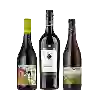
Winery AdnamsFrench Red
This wine generally goes well with beef, lamb or mature and hard cheese.
Food and wine pairings with French Red
Pairings that work perfectly with French Red
Original food and wine pairings with French Red
The French Red of Winery Adnams matches generally quite well with dishes of beef, lamb or spicy food such as recipes of navarin of lamb, canned cassoulet or tunisian tagine.
Details and technical informations about Winery Adnams's French Red.
Discover the grape variety: Ravat blanc
Interspecific crossing between Seibel 5474 (Seibel 405 x Seibel 867) and Chardonnay by Jean-François Ravat. After 1945, it was already considered a quality grape variety, and is now listed in the Official Catalogue of Vine Varieties, list A1.
Informations about the Winery Adnams
The Winery Adnams is one of of the world's great estates. It offers 62 wines for sale in the of Hérault to come and discover on site or to buy online.
The wine region of Hérault
The wine region of Hérault is located in the region of Pays d'Oc of Vin de Pays of France. Wineries and vineyards like the Domaine La Grange des Pères or the Domaine La Grange des Pères produce mainly wines red, white and pink. The most planted grape varieties in the region of Hérault are Merlot, Cabernet-Sauvignon and Chardonnay, they are then used in wines in blends or as a single variety. On the nose of Hérault often reveals types of flavors of minerality, yellow apple or passion fruit and sometimes also flavors of nutty, anise or stone fruit.
The wine region of Pays d'Oc
Pays d'Oc is the PGI for red, white and rosé wines that are produced over a wide area of the southern coast of France. The PGI catchment area corresponds roughly to the Languedoc-roussillon">Languedoc-Roussillon wine region, one of the largest wine regions in France. The area covers all wines that are not produced under the strict laws that govern AOC-level appellations in the regions: among them, Corbières, Minervois and the Languedoc appellation itself. The Pays d'Oc PGI is arguably the most important in France, producing the majority of the country's PGI wines.
The word of the wine: Chaptalization
The addition of sugar at the time of fermentation of the must, an ancient practice, but theorized by Jean-Antoine Chaptal at the dawn of the 19th century. The sugar is transformed into alcohol and allows the natural degree of the wine to be raised in a weak or cold year, or - more questionably - when the winegrower has a harvest that is too large to obtain good maturity.













